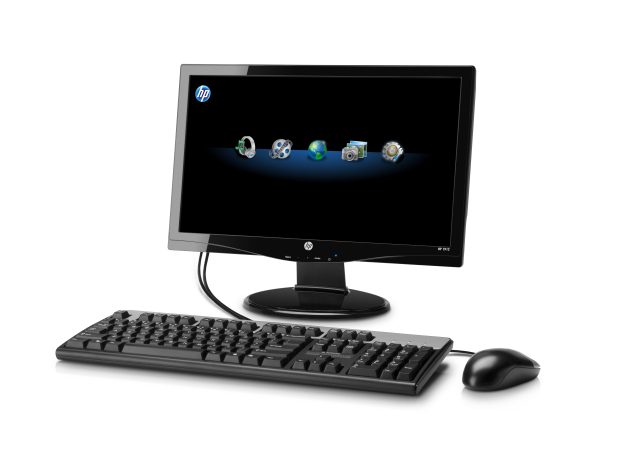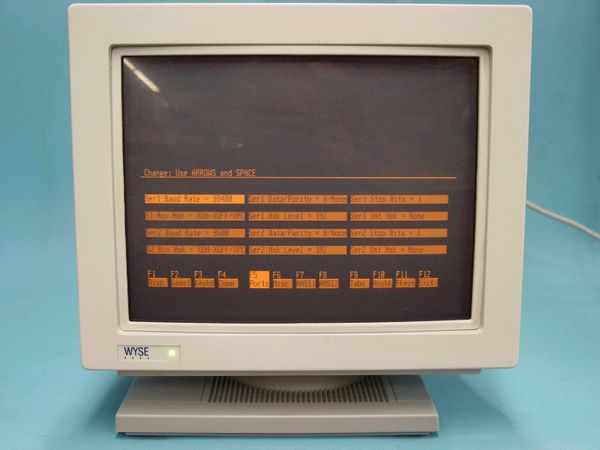Our note: He starts out ramping up to the expected balloon pop but then I think he gets a little unsure. I feel unsure sometimes but also I ask myself would I rather have a quad core i9 CPU with 24GB, or big monitor with a very very fast network connection. No contesto....
Craig
There are two end-user computing devices I hold in the highest disregard: all-in-one PC desktops and thin clients. While they both apparently have their place in the information technology ecosystem--preferably far away from me--they also carry with them a hidden message to the poor worker drone stuck using them. Your boss doesn't think you're worth spending money for a real computer.
That's never been more true than now, when more companies are letting people bring their own laptops to work (which also says that your boss doesn't think you're worth spending money for a real computer, but at least lets you pretend to feel good about it). Yet for some reason, hardware manufacturers keep trying to inflict these yokes of oppression upon us.
Sure, at least all-in-one PCs, as confused about "what they want to be when they grow up" as they are, are actual computers. But I have never been able to find a place in my mind where I can find comfort with thin client hardware. If anything, I have sort of a dark fascination with it, in the way someone might marvel at medieval torture devices. I can't help but wonder what twisted genius devised such instruments of misery.
My (obviously) long-suppressed feelings of anti-low-rent-client rage were unleashed last week when Hewlett-Packard announced a number of new business products at a press event in New York. Among the business computers announced were--you guessed it--all-in-one PCs and an ARM-powered thin client masquerading as an "Internet monitor."

Part non-portable smartphone, part permanently tethered and underpowered ChromeBook, the HP Passport 1912m seemed vaguely interesting until Andrew Cunningham and I started looking into its details and asking questions. One of those questions, from Andrew, was, "Why does this thing exist?" It runs a custom HP version of Linux with an outdated Firefox browser (version 4.0). The Passport is intended to be an Internet thin client--a "cloud client"--for people who happen by and need to check something on the Web, but whom you'd rather not give WiFi or Ethernet jack access. In other words: enemies.
Virtual Demoralization Infrastructure
Since the arrival of the PC, there have always been those who want to push some sort of less-than-PC on people. This is usually for the sake of security, management, "total cost of ownership," or some other fad or fiction of the moment (like convincing small and medium businesses that thin clients are the best thing since 3.5" floppies). Yet every professional encounter I have had with thin client technology in the office has brought nothing but pain.
I understand the allure of remote desktop technology. But I have never understood why someone who could just as easily put a real PC in front of a user would opt instead to give them a slow, creaky, laggy shadow of one with a cheap keyboard and maybe a USB peripheral.
That's not to say there are absolutely no situations where a hardware thin client makes sense, at least for now: shop floors, call centers, or pretty much any place that used to be fine with a text-based terminal (the original thin client) makes a good candidate. So do cash-strapped schools that want to put groups of kids at their own screens. But those are limited use cases, and for very specific purposes--none of which include working in a thin client environment all day. Even these exceptions prove the rule: thin clients are a crime against humanity.
Firsthand hater experience
I admit, I am very biased. I can trace my total lack of journalistic fairness and balance on the topic of thin clients to a series of encounters with each evolutionary step of the technology. The first was in 1990, when, fresh out of the Navy, I was hired by a value-added reseller as a networking engineer and customer service and training manager. My new boss was hedging his bets and diversifying away from the dedicated word processor business that had made his fortune. Behind his desk, he proudly hung a plaque honoring his achievements as an Exxon word processor technician. Most of his business was centered on supporting the Social Security Administration's aging collection of Wangs, Laniers, and Xerox 860s.
He had signed on as a Wyse reseller and came back from a conference with this great new solution for small offices--a "server" running SCO Unix 386, Wyse terminals, and WordPerfect for Unix. He had never worked with Unix before, but he was assured that this was the perfect solution for law offices and other document-heavy businesses that were...well, cheap. Low total cost of ownership, solid security, shared printing resources, and all the other buzzwords that appealed to billable-hours based customers.

Read rest of article
Full article on Ars Technica












 This site is produced by
This site is produced by